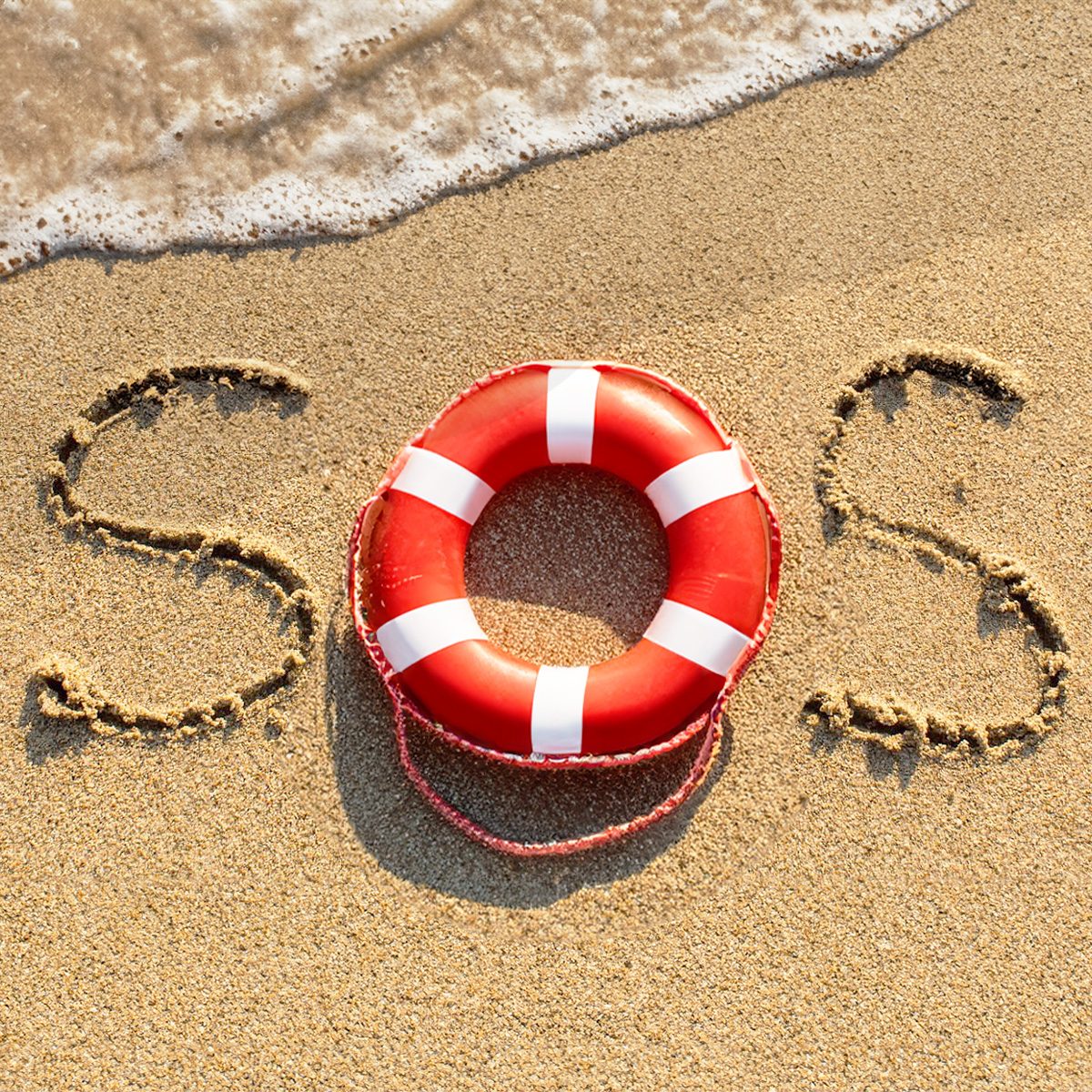Nope, the SOS meaning is not "save our ship." Not even close. Here's what SOS means and how to use the term today.

Here’s What SOS Really Means and Where the Term Came From

Best known for its appearances in desert-island cartoons, maritime movies and earworms by ABBA and Rihanna, the word SOS has been used as a code for emergency distress signals since 1905. If you’re lucky, your only experience with an SOS message is the text you got from a friend looking for someone to put an end to their really bad date. It’s not exactly a “save our ship” or “save our souls” situation. But then again, the term—whether used for distress or in everyday lingo—doesn’t officially stand for those phrases. So what is the SOS meaning?
The answer, dear readers, is nothing—and that’s exactly why it’s important. Read on to find out the real meaning of SOS, its origins in maritime communication and how the term is used today.
Get Reader’s Digest’s Read Up newsletter for more knowledge, humor, travel, tech and fun facts all week long.
What does SOS mean?
According to Merriam-Webster, SOS is “an internationally recognized signal of distress in radio code, used especially by ships calling for help.” But in non-maritime contexts, the dictionary says it’s essentially “a call or request for help or rescue.”
Unlike acronyms like ASAP or FOMO—where each letter represents a specific word—SOS doesn’t stand for anything. Still, because the term is so prevalent in marine contexts, people often confuse it for an abbreviation or acronym for phrases like “save our souls” and “save our ship.”
Where does the term SOS come from?
The term SOS is a Morse code sequence, deliberately introduced by the German government in a 1905 set of radio regulations to stand out from less important telegraph transmissions. Translated to Morse code, SOS looks like this:
. . . – – – . . .
Three dots, three dashes, three dots. At a time when international ships increasingly filled the seas and Morse code was the only way to communicate instantaneously between them, vessels needed a quick and unmistakable way to signal that trouble was afoot.
Why was SOS chosen as a distress signal?

At first, different nations used different codes. Britain, for example, favored CQD; as the Titanic sank into the ocean in April 1912, it broadcast a mix of CQD and SOS calls (the resulting confusion helped take CQD out of use for good).
However, this unique Morse code came with an ease of transmission. Whether relayed audibly via radio or visually as three short flashes of a flashlight followed by three long flashes and then three more short flashes, the sequence of triplet dots and dashes proposed by the German government soon became the international favorite for its elegant simplicity. Transmitted without pause and repeated every few seconds, the SOS signal was unmistakable. Part of what made it work so well was the fact that it didn’t form any known word or abbreviation.
There was also a visual appeal. While the same series of dots and dashes could just as easily translate to other similarly constructed maritime signals, the uniform SOS signal had an instantly recognizable symmetry. Not only is SOS a palindrome (a word that reads the same backward and forward), but it’s also an ambigram (a word that looks identical whether read upside down or right side up). When carved into a snowbank or spelled out in boulders on a beach, SOS still looks like SOS, no matter which way the rescue chopper approaches. This visual nature allows for SOS’s meaning to be precisely conveyed and quickly understood in emergencies.
By 1908, the triple dot-dash-dot code became the official international radio distress signal and remained that way until 1999, when Morse code was declared all but dead.
How do we use SOS today?
While the original SOS meaning remains relevant even today, its use in nautical settings has changed. Most maritime communication now uses digital signals—meaning you’d probably catch the captain of a stranded ship picking up the satellite phone first rather than tugging at her radio transmitter to send an SOS signal during an emergency.
The term’s usage has also evolved and expanded into various new settings. You’ll come across it in pop culture and slang, where it often conveys a medium- to low-distress situation. It’s even used ironically in some situations. Here’s how you may encounter the term SOS around you today:
In medicine
One of the last places you probably expect to see SOS is on a prescription, but there’s actually a medical definition of the term. As Merriam-Webster notes, it can mean “if occasion require; if necessary.” This usage traces back to the Latin phrase si opus sit, or “if there is a need.”
You won’t spot SOS on all of your prescriptions, but depending on the medications you take and the country you live in, you could see it on some. So what, exactly, does SOS on a prescription mean? In essence, it’s the doctor’s way of saying, “Take this medication only when you really need it.” In some countries, for instance, certain depression or antianxiety meds may come with this disclaimer—you’ll use them when your mental health symptoms are really bad but not every day. Addictive painkillers may get similar “use as needed” warnings.
On phones
The SOS feature built into most modern smartphones is the perfect marriage of the term’s traditional use and new-age tech. The SOS feature on iPhones works even when the phone is without a cellular network or Wi-Fi connection—particularly for American, Canadian and Australian users—making it a modern-day distress signal.
Say you’re on a mountain hike and get into an unfortunate situation on the way down—the SOS feature can save you by calling for help even if your 911 calls are not going through. Upon activation, it automatically dials emergency services and sends your current location to preset emergency contacts, letting them know you need immediate help.
How can you use the SOS abbreviation properly?
The term SOS has made its way out of the vocabulary of sailors, navy officials and merchants and into the daily life of the masses. So when you text your group chat, “SOS! He’s back” after your ex pops up out of nowhere, it is as valid a use as a captain alerting the coast guard of a malfunctioning ship.
The only thing to keep in mind when using the term is to remember what SOS stands for—a call for help from someone who could be in distress, severe or moderate (because, let’s be honest, an unexpected text from an ex is distressing for the best of us).
On the flip side, if you’ve received an SOS signal and sense a dire situation for the sender, act swiftly by alerting the proper authorities, and you could help save a life!
Why trust us
At Reader’s Digest, we’re committed to producing high-quality content by writers with expertise and experience in their field in consultation with relevant, qualified experts. We rely on reputable primary sources, including government and professional organizations and academic institutions as well as our writers’ personal experiences where appropriate. For this piece on the SOS meaning, we verified all facts and data and backed them with credible sourcing, and we will revisit them over time to ensure they remain accurate and up to date. Read more about our team, our contributors and our editorial policies.
Sources:
- Merriam-Webster: “Definition of SOS”
- BBC News: “Titanic: The final messages from a stricken ship”
- Merriam-Webster: “Medical Definition of SOS”
- Apple: “If you see SOS, No Service, or Searching on your iPhone or iPad”
- Boston Medical Library Association: “A dictionary of terms used in medicine and the collateral sciences”
- Minnesota State: “Partial list of prescription abbreviations”






















